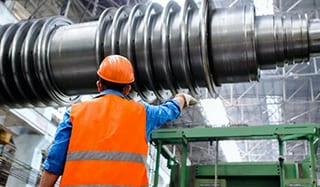Scope of Electrical and Electronics Engineering

Imagine your life without electricity and consumer durables like television, refrigerator, microwave, etc. – seems mundane and hard to survive. Isn’t it? Electricity and electronic appliances have become one of our basic needs in day-to-day life. With our increasing dependency on electrical and electronic products, the scope of electrical and electronics engineering has also grown in giant strides as compared to previous decades. If we talk about job quotient in the different sectors of electrical and electronics engineering, it is ever-increasing to meet the variegated needs of the consumers in India as well as abroad. Be it transport, banking, other private and public sectors and even educational premises, electrical and electronics engineering has a vital role to play in any environment.
Let’s read further what electrical and electronics engineering (EEE) is all about.
An Introduction to Electrical and Electronics Engineering
Before delving deeper into the scope of electrical and electronics engineering, it’s important to know about what electrical and electronics engineering is meant for.
What is Electrical Engineering (EE)?
Electrical engineering is the core study of the applications of electricity and electronics, which is one of the most chosen streams by engineering students. It was introduced dates back to the 19th century. ‘Faraday’s Law of Induction’ brought revolution in Electrical Engineering by introducing new concepts of current flow. Mainly the electrical engineering study involves:
- Generation of electricity
- Transmission of electricity
- Distribution of electricity
The pioneer discoveries in electrical engineering are induction motors by Nicola Tesla, electric light bulb by Thomas Alva Edison, and radio by Guglielmo Marconi. These innovators transformed the scenario by implementing the concept of electrical engineering into practical devices. The specialized categories of EE encompass power generation and transmission systems, motors, batteries and control systems.
What is Electronics Engineering?
The electronics engineering revolves around the study of electronic devices, circuits, equipment, and systems. While pursuing electronics engineering, students learn to utilize a wide range of electronic components from analogue to digital components, microcontrollers, microprocessors, and programmable logic devices. The specific branches of electronic engineering mainly include:
- Analogue Electronics
- Digital Electronics
- Power Electronics
- Embedded Systems
- Communication Systems
In 1904, John Ambrose Fleming invented the thermionic diode vacuum tube and this invention is referred to as the ‘birth of electronics’. This vacuum tube worked as the foundation of all electronics of that time, including television, and radar. Later on, transistors replaced the vacuum tubes in 1947, which was the invention of William Shockley, John Bardeen and Walter Brattain at AT&T’s Bell Laboratories.
Difference between Electrical Engineering and Electronics Engineering
Electrical and electronics are two related forms of engineering. However, most of the engineering UG and PG courses club these technologies together since both the technologies complement each other. B.Tech in Electrical and Electronics Engineering, B.E in Electrical and Electronics Engineering, and M.Tech in Electrical and Electronics Engineering are the major courses offered at engineering institutions. Electrical and electronics engineering can be distinguished by the functions performed in both the specializations. Below table might be a help:
Functions of Electrical EngineersFunctions of Electronics Engineers
Developing/ improving products by using electric power.Building software, electronic components, and products for commercial, industrial and residential use.
Manufacturing and installation of electrical goods after performing detailed calculation.Creating testing and maintenance environment for electronic components and equipment
Testing of electrical equipment to ensure the products meet the standards and specifications.Inspecting of electronic goods to ensure their safety standards and applicable regulations.
Investigating the consumer complaints, evaluate the issues, and recommend the solutions.Improving the technical performance of electronic properties by development and modifications
Coordination with project managers to warrant the on-time project delivery within the budgetary constraints.Constant evaluation of electronic equipment to keep a check on modifications and repair.
The above-said job duties of electrical and electronics engineers highlight the major differences in both the streams of engineering. However, the fundamental differences can be mentioned as below:
Major Differences: Electrical V/S Electronics Engineering
AspectsElectrical EngineeringElectronics Engineering
CircuitsNo Processing CapabilityHave Processing Capability
FunctionCircuits power machines with electricityCircuits interpret an instruction or a signal
Component StructureElectrical components are large and use AC voltagesMostly, electronic components are tiny and work with single microprocessor
Types of Electrical Engineering
Electrical engineering can be classified as follows:
- Energy Systems
- Power Engineering
- Systems and Control
- Instrumentation and Real Time Computing
- Video, Image and Speech Processing
Types of Electronics Engineering
Electronics engineering can be classified as follows:
- Telecommunications Engineering
- Embedded Systems Design
- Microelectronics
- Electromagnetic Engineering
- Control Engineering
- Instrumentation Engineering
- VLSI Design Engineering
- Computer Engineering
Why Electrical and Electronics Engineering come together?
The mechanism of almost all modern appliances is designed with the combination of electrical and electronic circuitry. Hence, studying both the forms of engineering altogether has become mandatory for aspiring students to learn the circuit programming of the appliances wholly. The electric circuits in an appliance help it operate while the electronic circuits interpret the signals or instruction transmitted by the users and let the machine perform accordingly.
Expanding Scope of Electrical and Electronics Engineering with Government of India Initiatives
Scope of Electrical Engineering
‘Vision 2022 for Indian Electrical Equipment Industry’- an initiative by the Ministry of Heavy Industries and Public Enterprises has amplified the scope of electrical and electronics engineering in India.
Estimated growth (in US$ Billion) of the electrical engineering market by 2021-22 is as follows:
With the help of the above illustration, it can be said that the EE market in India is expected to see unprecedented growth as the projection for ‘Net EE Market’ is USD 100 Billion. It is anticipated that the growth of generation equipment segment might reach up to Rs. 125,000 crore whereas T&D equipment segment will touch the figure of Rs. 375,000 crore. On the other hand, the partnership of Indian electrical engineering in global EE trade will be 2% by 2022, which is currently hanging around 0.8%. The import rate is also expected to decrease by 7-8% due to continual advancements in Indian electrical engineering.
The aforesaid stats show that Indian EE Ecosystem is on the right path and the scope is all set to increases every day. As far as job opportunities are concerned, the report of Vision 2022 says that there will be direct recruitment of 1.5 million and indirect recruitment of 2 million electrical engineers. This initiative or vision is all about the ambitions and capabilities of the Indian electrical equipment industry.
Scope of Electronics Engineering
Under the‘Electronics System Development and Maintenance (ESDM)’ scheme, the government puts endeavors to impart training for up-skilling the existing manpower for service and manufacturing industry. ESDM is also referred to as a prerogative of Prime Minister of India under ‘Make in India… Made in India’ scheme. Read the below pointers to know how the government’s indulgence in ESDM has been enlarging the scope in electronics engineering.
- Government has introduced Phased Manufacturing Programme (PMP) and fiscal interventions to promote the production of electronic products within the national boundaries.
- Information Technology Agreement (ITA-1) of WTO has been focusing on devising the right methods for encouraging the production of electronic goods.
- Fuelling electronic industry by launching incentive mechanisms such as interest subsidy, credit default guarantee, etc. to support the expansion of existing units and setup of new manufacturing units.
- Exemption on the import duty levied over capital equipment to reduce the expenditure on capital of existing as well as new manufacturing units.
- Government support for ATMP (Assembly, Testing, Marking and Packaging) lines for identified electronic components/ products.
- Launch of new schemes aimed at infrastructural development along with the amendments in the prevailing Electronics Manufacturing Clusters (EMC) scheme by boosting Brownfield and Greenfield manufacturing clusters.
Along with the above-information, the below table will describe how the reduced import from 2015 to 2017 is going to impact the electronic industry:
S.NoProduct2015-16 (USD Million)2016-17 (USD Million)Difference in both years (In %)
1Video Game Consoles and Machines21.0015.64-26%
2Printers and MFD83.5159.13-13%
3Personal Computers2232.192148.75-4%
4Mobile Phones5922.513739.95-37%
5Microwave Ovens57.2853.13-7%
6Electrical Inverters206.67180.57-13%
7DTH Set Top Box642.90367.37-43%
8Computer Monitors401.82281.66-15%
9Automatic Data Processing Machines258.23240.04-3%
10Audio Frequency Electric Amplifiers20.7216.41-21%
Source: https://digitalindia.gov.in/writereaddata/files/5.Electronics.pdf
Such a decrease in the import of primary electronic goods has been showing the highly positive signs of remarkable growth in the scope of electrical and electronics engineering in India.
Scope of Electrical and Electronics Engineering- A Study of Global Job Market Size
According to the study of ‘Bureau of Labour Statistics’, the outlook of jobs in different sectors for electrical and electronics engineers in 2016-17 along with the predictive growth is as follows:
Source- https://www.bls.gov/ooh/architecture-and-engineering/electrical-and-electronics-engineers.htm
Job Market Scenario for Electrical and Electronics Engineers in India
At present, the number of electrical engineers serving in different industries has touched around 2,00,000 in India. With the help of below stats, the industries that cater the job opportunities to electrical engineers are represented-:
On the other hand, electronics engineers have occupied around 150,000 job opportunities in India. The largest employers for electronics engineers are as follows:
Electronics engineers, except computer, hold about 136,300 jobs. The largest employers of electronics engineers, except computer are as follows:
The survey by Bureau of Labour Statistics suggests that the electrical and electronics job market will grow at a pace of 7% per year, which is no less than any other industry. It also shows the ample scope of electrical and electronics engineering industry worldwide. In India, the flagship schemes by the government have brought enthusiasm to the electrical and electronic industry and it is also a great sign for the job opportunities for the engineers in the near future.
It is predicted that the scope of electrical and electronics engineers will multiply largely in the core industries. The companies are expected to rely upon the expertise of skilled engineers only to handle the tasks like manufacturing of electrical and electronics devices and components. It depicts that the engineers are going to be in demand for a very long time.
The projections for the job opportunities by 2026 say that the job size of 324,600 in 2016 will touch 345,800 jobs for electrical and electronics engineers with a 7% hike. Hence, the total increase in job opportunities would be 21,200. If talk m about the electrical engineers only, the number of jobs in 2016 were 188,300 and it will witness a hike of 9% (i.e. 16,200 in numbers) by 2026. On the other hand, there were total jobs for electronics engineers (except computers) 136,300 in 2016. It will see a growth of 4% and 5,100 new opportunities will be added to respective industries.
Wrap Up
This entire write-up is based on facts and figures, which proves the dominance of electrical and electronics engineering- not just currently, but in future as well the scope of electrical and electronics engineers will remain unaffected by the factors like technical advancements and advancements, recession, etc. Hence, the moral of the story is that the students looking to pursue engineering education after 12thstandard can go for electrical and electronics engineering, without a doubt, as it is one of the burgeoning streams of engineering in the coming future. Tap into your future by applying for B.Tech in Electrical and Electronics Engineering.

















































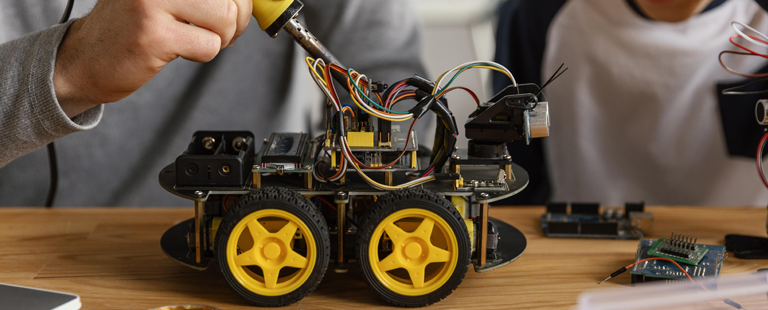




















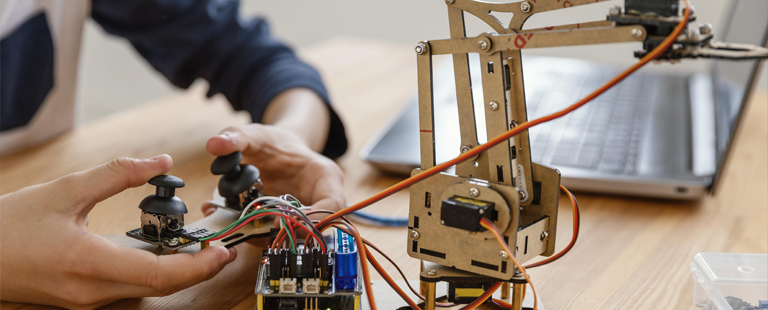


















































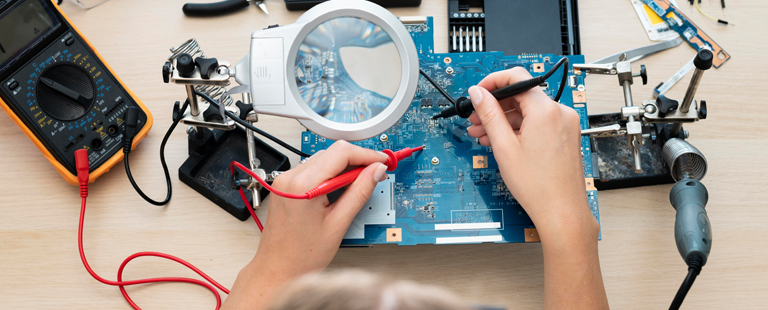



































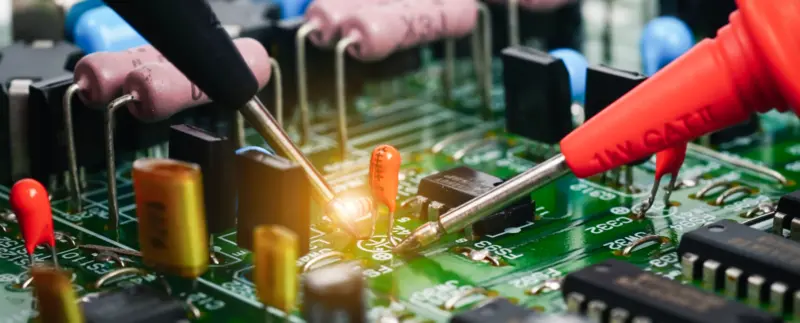































![Arm_Yourself_with_Deep_Business_Knowledge_&_Insights_with_PhD_Program_in_Business_Administration_at_Mahindra_University[1] Arm_Yourself_with_Deep_Business_Knowledge_&_Insights_with_PhD_Program_in_Business_Administration_at_Mahindra_University[1]](https://www.mahindrauniversity.edu.in/wp-content/uploads/2023/04/Arm_Yourself_with_Deep_Business_Knowledge__Insights_with_PhD_Program_in_Business_Administration_at_Mahindra_University1.jpg)
![Emerge_as_a_Forward_thinking_Mechanical_Engineer_with_B_1140x460[1] Emerge_as_a_Forward_thinking_Mechanical_Engineer_with_B_1140x460[1]](https://www.mahindrauniversity.edu.in/wp-content/uploads/2023/04/Emerge_as_a_Forward_thinking_Mechanical_Engineer_with_B_1140x4601.jpg)
![B.Tech_in_Computer_Science_Engineering_(BTech_CSE)_Your_Gateway_to_Become_a_Computer_Genius_1140x460[1] B.Tech_in_Computer_Science_Engineering_(BTech_CSE)_Your_Gateway_to_Become_a_Computer_Genius_1140x460[1]](https://www.mahindrauniversity.edu.in/wp-content/uploads/2023/04/B.Tech_in_Computer_Science_Engineering_BTech_CSE_Your_Gateway_to_Become_a_Computer_Genius_1140x4601.jpg)
![Digital_Marketing_is_Booming_Globally_1140x460[1] Digital_Marketing_is_Booming_Globally_1140x460[1]](https://www.mahindrauniversity.edu.in/wp-content/uploads/2023/04/Digital_Marketing_is_Booming_Globally_1140x4601.jpg)
![MU_Electrical20Computer20Engineering_1140x460[1] MU_Electrical20Computer20Engineering_1140x460[1]](https://www.mahindrauniversity.edu.in/wp-content/uploads/2023/04/MU_Electrical20Computer20Engineering_1140x4601.jpg)
![BA_LLB_Hons_Course_at_Mahindra_University[1] BA_LLB_Hons_Course_at_Mahindra_University[1]](https://www.mahindrauniversity.edu.in/wp-content/uploads/2023/04/BA_LLB_Hons_Course_at_Mahindra_University1.webp)
![Management_&_Business_Administration_is_Tremendously_High[1] Management_&_Business_Administration_is_Tremendously_High[1]](https://www.mahindrauniversity.edu.in/wp-content/uploads/2023/04/Management__Business_Administration_is_Tremendously_High1.jpg)

![whyistraining&placementcellimportant[1] whyistraining&placementcellimportant[1]](https://www.mahindrauniversity.edu.in/wp-content/uploads/2023/04/why20is20training2020placement20cell20important1.png)
![TheDifferencesbetweenRights&Duties[1] TheDifferencesbetweenRights&Duties[1]](https://www.mahindrauniversity.edu.in/wp-content/uploads/2023/04/The20Differences20between20Rights2020Duties1.png)
![sleep_deprivation[1] sleep_deprivation[1]](https://www.mahindrauniversity.edu.in/wp-content/uploads/2023/04/sleep_deprivation1.jpg)
![SelfLoveBlogImage2[1] SelfLoveBlogImage2[1]](https://www.mahindrauniversity.edu.in/wp-content/uploads/2023/04/Self20Love20Blog20Image2021.png)












































































